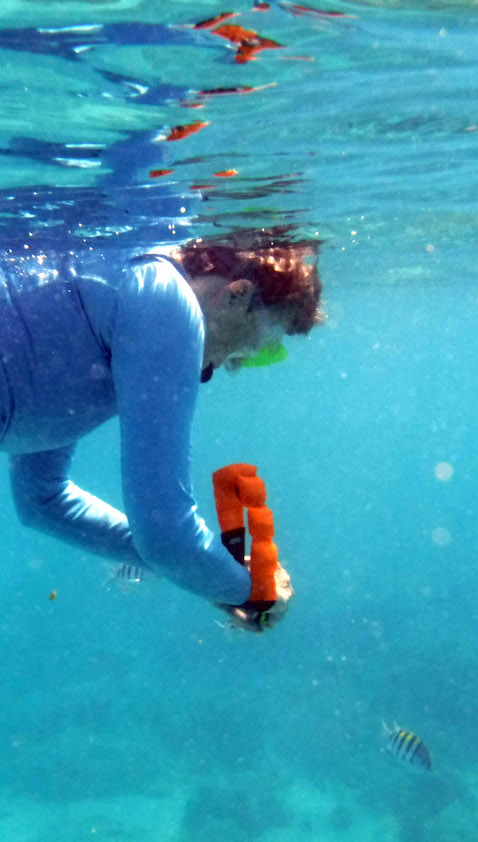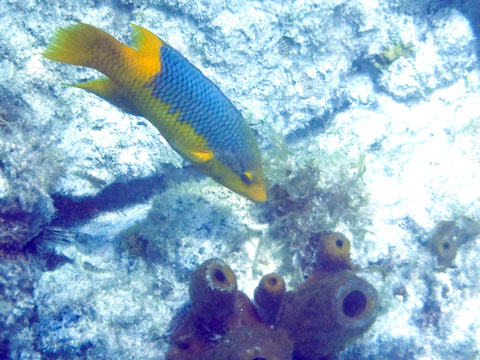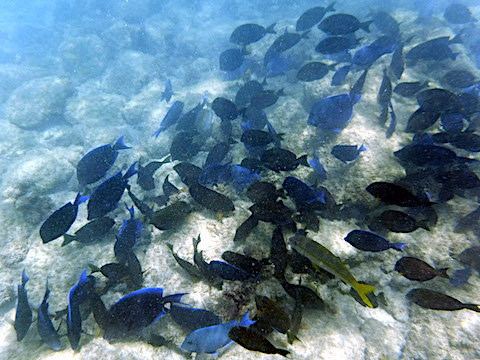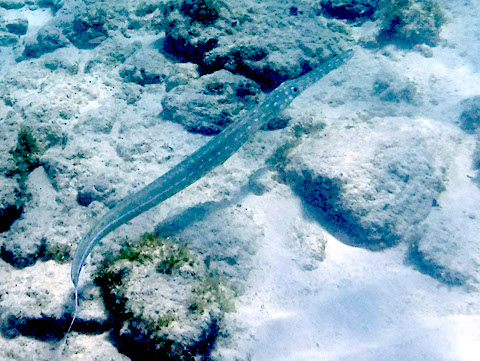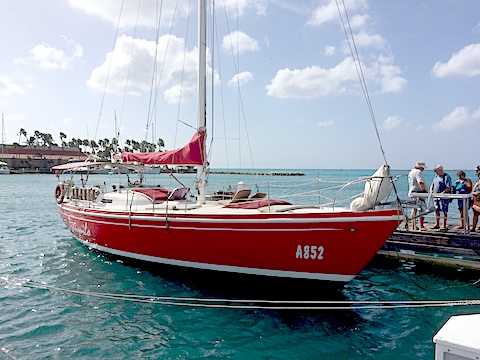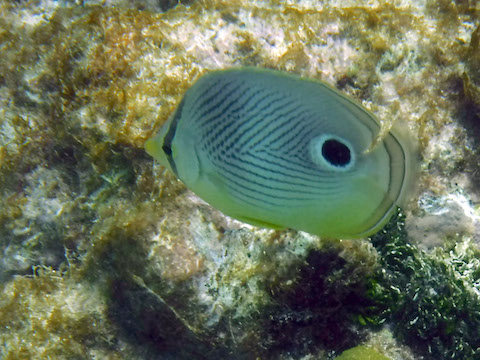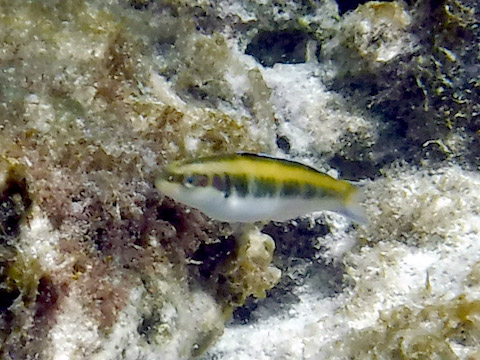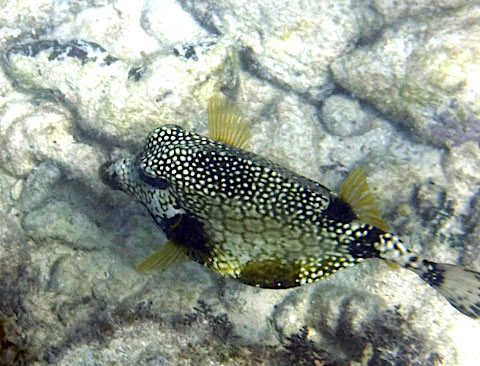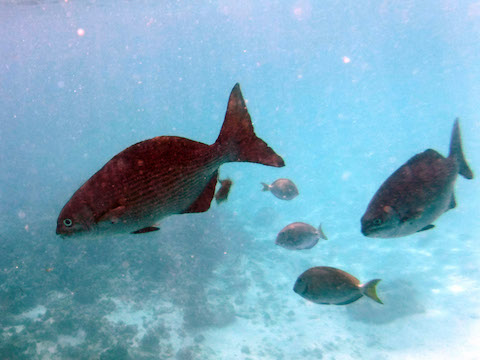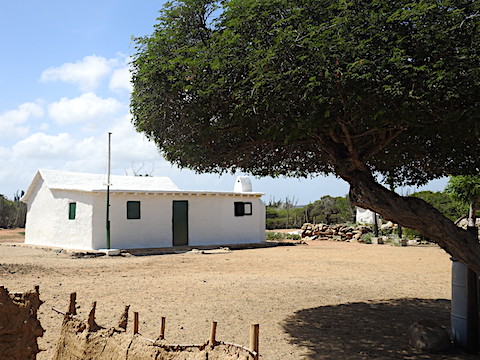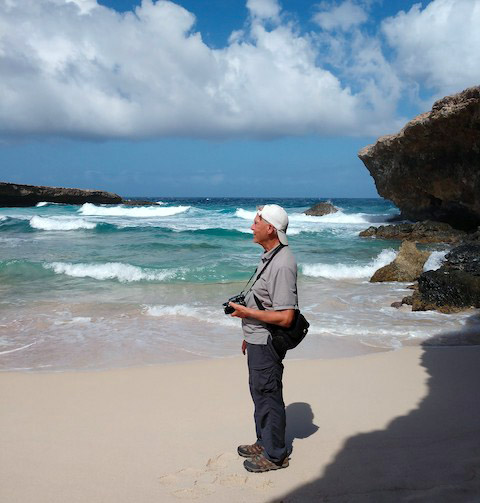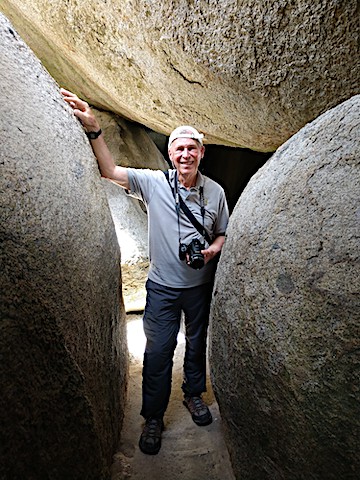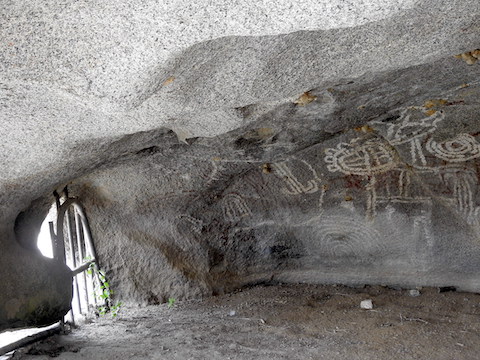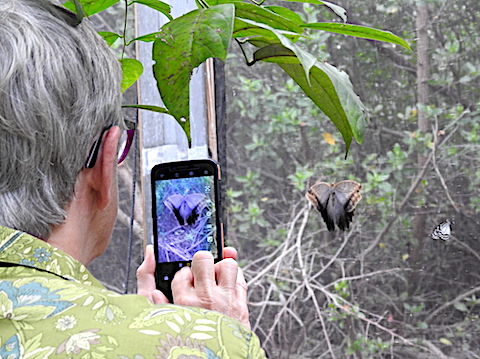|
Bon Bini! Bon bini means welcome in the
Papiamento creole language
of Aruba, a small Dutch island
off the coast of Venezuela.
Residents here might also tell you “Welkom”, “Bienvenidos”, or, most likely,
“Welcome”. All are common languages used here and most people speak all four.
We previously visited Aruba,
“One Happy Island”, in
February of 2016 and thought it would be interesting to visit again.
This time we went in November because Gail planned to take a Master Naturalist
class in January and February. Also, by changing the season, we expected to
see different birds migrating on their way to South America and, maybe,
experience slightly different wind patterns.
Well, the wind patterns were the same. Strong winds constantly blew from the
East. But the air and water temperatures were warm. We even snorkeled without
wearing our wetsuits. And we did see new birds.
Beach tennis? Never heard of it? Us neither. Aruba was hosting a large
beach tennis tournament when we were there.
Two girls in the Brazilian family who stayed in the
unit next to ours were beach tennis champions and had the trophies to show for it.
|
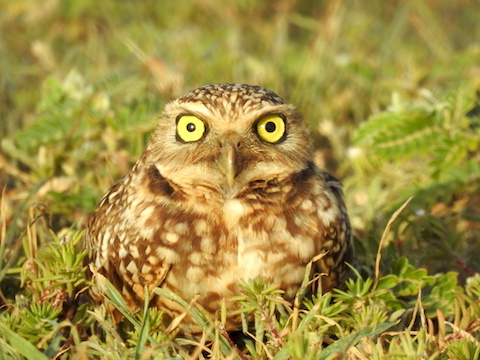
|

|
Our usual ideas of entertainment when traveling are snorkeling, birding, hiking,
sightseeing,
and trying out the local foods. This time we decided to check out the
Bon Bini Festival
held every Tuesday evening in old Fort Zoutman. It was delightful!
We arrived a little before the entertainment began and enjoyed an island meal
of fish for me and chicken for Gail. Then the performances began. There was a
small band, a narrator, and dancers. They told the story of Aruban history and culture.
The dancers were high school students. Their dances were swirling and colorful.
Each dance had a different costume.
Al was especially impressed by a ribbon dance where they entangled and then disentangled
themselves.
Toward the end of the evening, the dancers began to select members of the audience
to join them in dances and in a skit that involved whacking a plastic rooster while
blindfolded. Al was sitting about three rows back on an aisle, when a young dancer
asked if he would be willing to join her. And away he went.
It was an easy side-to-side two step so Al did OK. The dancer said
that she had been born in Colombia but had lived in Aruba since a young age.
The program ended with a drum and brass band coming onto the stage. After they had played
for a while, the dancers enlisted audience members in a line dance.
Then we followed the band out the entrance and into the middle of Oranjestraat
where we shut down traffic for about ten minutes.
We heartily recommend this festival, even to those who don’t normally
go out for entertainment.
We attempted to go to a second Aruban Festival on Thursday evening in the
southern Aruban town of San Nicolas. We had been told that the festival
shouldn’t be missed.
We didn’t find a festival that night, even though
we did locate an “Aruba Carnival & Entertainment Village”.
Dinner that evening was interesting sandwiches from a food truck.
Later someone told us that this festival only happens once a month.
|

|
Of course, the reason for visiting a Caribbean Island is to snorkel. At least, that is our
reason. We snorkeled on five of the eight full days we spent on Aruba.
We started out at Boca Catalina. This place is frequented by many snorkeling tours.
That is less than ideal because there are a lot of people in the water, but, even
worse, the companies running the tours feed the fish. That upsets the ecology and also
results in fish swarming swimmers for food. We found sergeant majors
getting in our faces and getting between us and the fish we wanted to see.
Also the water was murky because of the waves hitting the sandy beach.
For our second snorkeling outing, we initially went to Arashi, but the waves
at the beach were quite strong. When snorkeling from the shore, we struggle
at the water’s edge to
put on our fins while waves roll us back and forth.
Therefore, we decided to skip Arashi
beach and to go back to Boca Catalina. The waves were weaker there, but still
strong enough that Al got some scrapes.
The following day we went on a snorkeling tour on the
Tranquilo
to the Mangel Halto reef.
This reef is near Spanish Lagoon and south of the airport.
The owner’s dog, Buster, joined
us on the boat, but not in the water. The water was quite clear, there was good coral,
and the fish were
not fed. This was a good outing.
And we got a light lunch. Al also got
a bad sunburn on his legs during the trip back to the dock because he had neglected
to use adequate sun screen.
Our fourth outing was at Baby Beach at the far southern end of Aruba.
Most of the lagoon was shallow and murky, but by swimming under the “Caution”
cable at the mouth of the lagoon, we found clear water and more interesting
fish. But the current coming into the lagoon was strong and it was a struggle
to stay in place.
For our final snorkel outing, we returned to Mangel Halto, but from the shore
instead of the boat. The water there mostly was shallow and
murky.
At the bar at the southern end of the bay, a strong current of fresh,
clean water gave good visibility, but, again, it was a struggle to stay in place.
The water also was clearer along the limestone cliffs in the northwest direction.
|
We spent a morning birding, being guided by
Michiel Oversteegen.
Michiel has great eyes and ears for locating birds,
and the knowledge to identify them.
He also knows where they nest.
We started in the north with the Burrowing Owl, seen at the top of this
page, and proceeded south until the sun got to be too hot for us and the birds.
Michiel told us a lot about the island,
and about daredevil off-road enthusiasts and resort
developers who are destroying habitat.
During our tour, there was even a surprise for Michiel:
a Northern Harrier at the Bubali Bird Sanctuary - not an
exotic bird for North Americans,
but this was the first ever sighting of one in Aruba.
According to Michiel, she was still on the island two weeks later.
We watched for birds later in our visit: at the Arikok National Park,
at the Casibari and Ayo Rocks, on a second visit to the “Warbler Alley”
that Michiel had introduced us to, and even at the Bed and Breakfast where we
stayed. We did see more birds, and even some that were new to us,
but our time spent with Michiel was the most productive.
|
Al and Michiel by the Balashi Gold Smelter Ruins

|
Two Southern Lapwings enjoying the sun at Divi Village Resort
|
A Collared Plover in endangered habitat
|

|
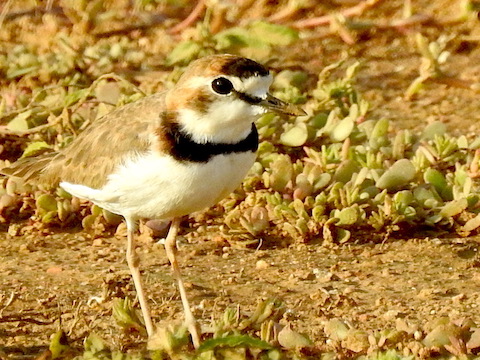
|
A Crested Bobwhite, endangered by habitat loss
and by invasive boa constrictors
|
A Venezuelan Tropial
|
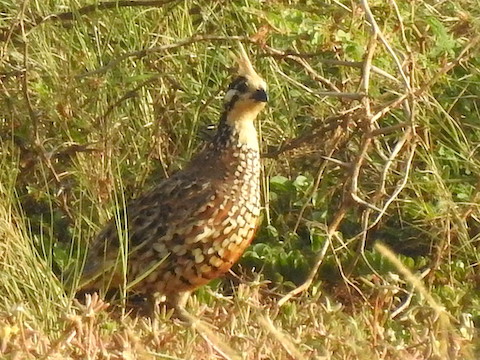
|

|
|
We stayed at the Coconut Inn Bed and Breakfast, about a mile inland from Palm Beach. We had a
comfortable two-room apartment. Breakfast was provided near the pool every
morning. It included three styles of eggs, bacon or sausage, pancakes or fried potatoes,
fruit or yogurt, bread, and cold cuts. A good start to the day!
The kitchen in our apartment had a four-burner range, a microwave oven,
and a full-sized refrigerator.
We could have cooked our own dinners there - after obtaining
a sharp knife and cutting board, which were not supplied - but we wanted
to enjoy the local foods.
Our unit was nearest the street, and that caused some issues: a streetlight
that shone on the bedroom windows and a motorcycle rider who occasionally
roared home at 2 AM.
Looking for good local food, we had dinner at a different place every day.
Most of the time, we ate outside since there were no insects and the nights
were warm.
One restaurant, Local Store, sounded like the kind of place we'd like,
but the menu was nearly all wraps and hamburgers.
Why spend a thousand dollars on airfare just to eat food you could get
back home?
Old Cunucu House Restaurant, the Bon Bini Festival food, Bingo’s
Restaurant, Charlie’s Bar, Pika’s Corner Aruban Cuisine, and La Granja
all were fine.
At one restaurant, the manager convinced us to try iguana soup. It had very
little meat on lots of spiky bones so we don't recommend it. The next day we
learned that iguanas are protected on Aruba and having them on the menu
could result in a fine of 500 to 3,000 florins. The restaurant that served the
soup to us just listed it as soup of the day. Beware!
Interestingly, nearly every food store we drove past and many restaurants had Chinese names.
|

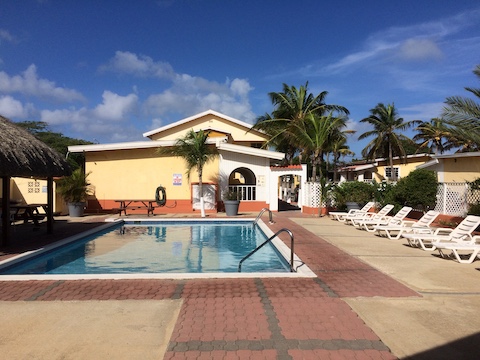
|
In addition to our birding tour, our land-based adventures included a visit to
Arikok National Park, climbing on and in the Casiberi and Ayo Rock clusters,
and the Butterfly Farm. Of course, the national park was enjoyable, with hiking,
scenic desert landscapes, the historic cunucu - a traditional adobe house -, and the wild coast.
The two rock clusters were interesting; Ayo even had petroglyphs in a rock shelter.
The Butterfly Farm was surprisingly educational, as well as having beautiful
butterflies flitting around.
POURPOURI
|
Entering our apartment
|
Some of the snorkeling tour boats at Boca Catalina
|
Trying to snap a warbler at “Warbler Alley”
|

|
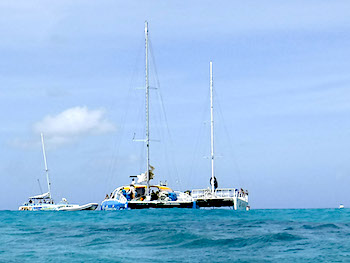
|
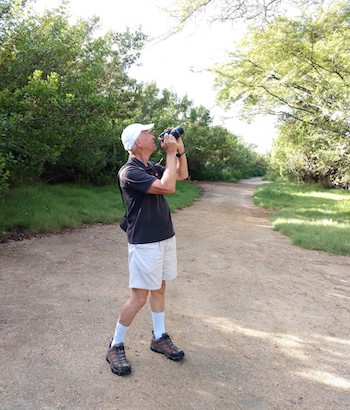
|
The Mangel Halto shore: limestone and mangroves
|
Gail giving a head rub to Buster, Tranquilo’s dog
|
Casibari Rock
|
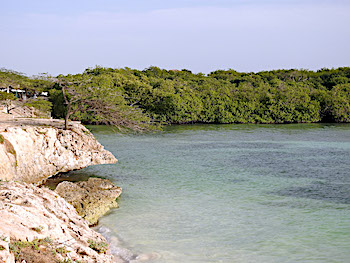
|
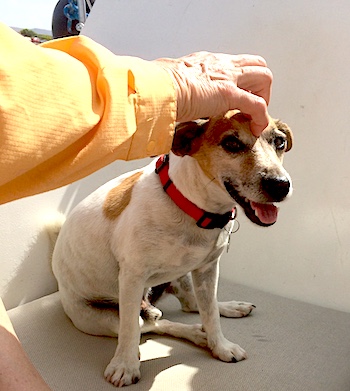
|
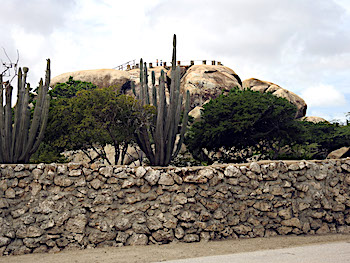
|
Arikok National Park’s desert landscape
|
Almost lost in the Dunes of Boca Prins
|
Another view of Boca Prins
|

|
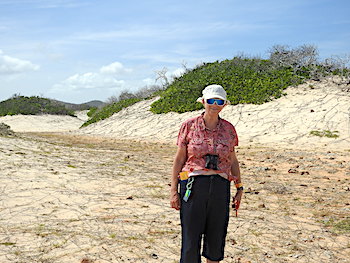
|

|
Gail in Charlie’s Bar
The food was good, the walls were covered
|
One of the many large, blue butterflies
at the Butterfly Farm
|
A pelican at Malmok Beach with a passenger
|
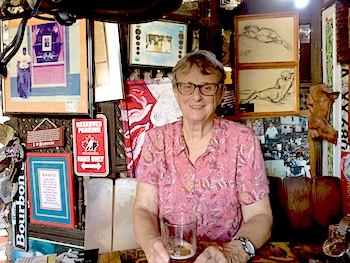
|
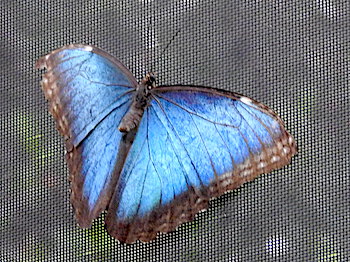
|
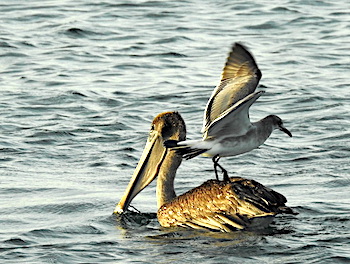
|
Bared-eyed Pigeon at Arikok National Park
|
“Don’t Eat Me!”
|
The California Lighthouse
|

|

|
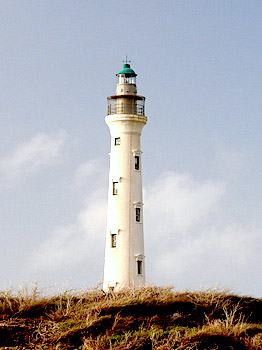
|
Sunset over the Caribbean
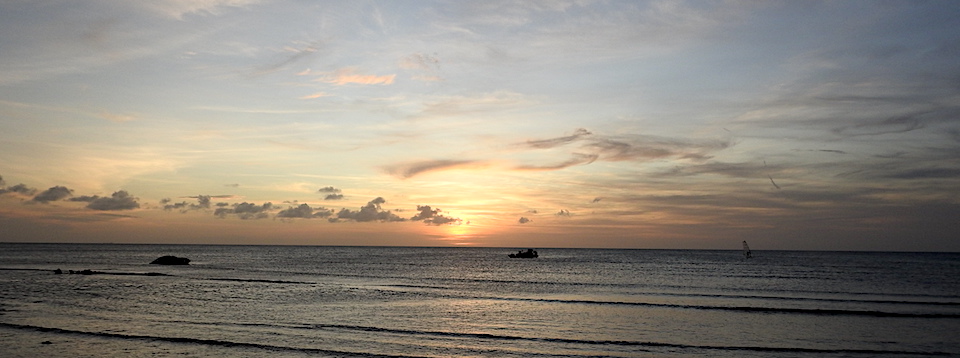
Responsible: Albert Holm
Created: 23 November 2019; Updated: 28 November 28



